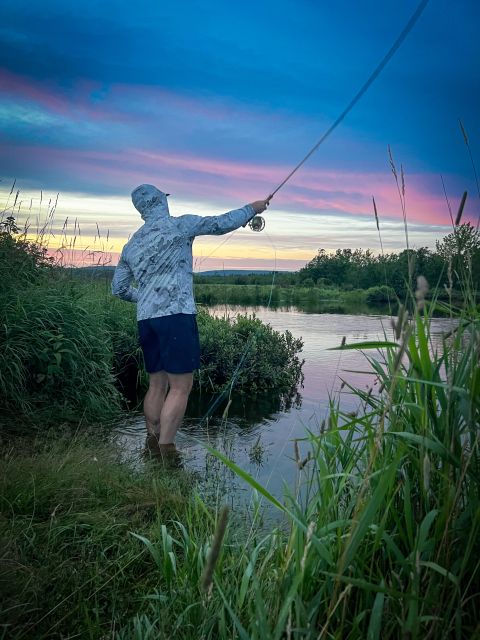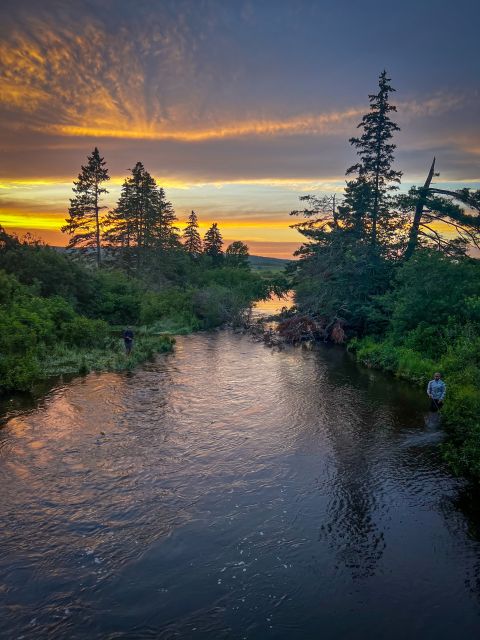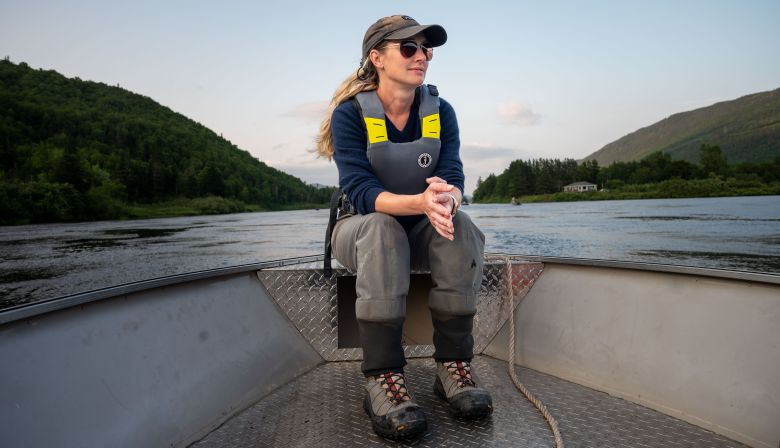
Subscribe & stay up-to-date with ASF


As summer intensifies, our rivers heat up and fish start to seek refuge in cooler pockets. During this time, it’s essential to handle them with utmost care when fishing. Please take a few moments to educate yourself about best fish handling practices and share this link with both novice and experienced anglers alike. Learn more at: https://www.keepfishwet.org/“
—
“If I ever stop salmon fishing, I’ll be six feet under—still gripping my fly rod in my casket.” – Cash Canning, 13
With Terra Nova behind me, I reacquainted myself with the regular jostle of my pickup, its movements a persistent reminder of Newfoundland’s rocky charm. I was pointing further west now, continuing my journey towards Gros Morne, River of Ponds, and Portland Creek. These locations, holding the essence of Lee Wulff’s legacy, promised good fishing opportunities, despite reports of a season with modest salmon returns.
But first, I had the chance to engage with fellow conservationists and anglers along the Humber and Exploits rivers. I was eager to share their stories and their projects, giving readers a window into how much work is being done across Canada and Maine in service of Atlantic salmon.
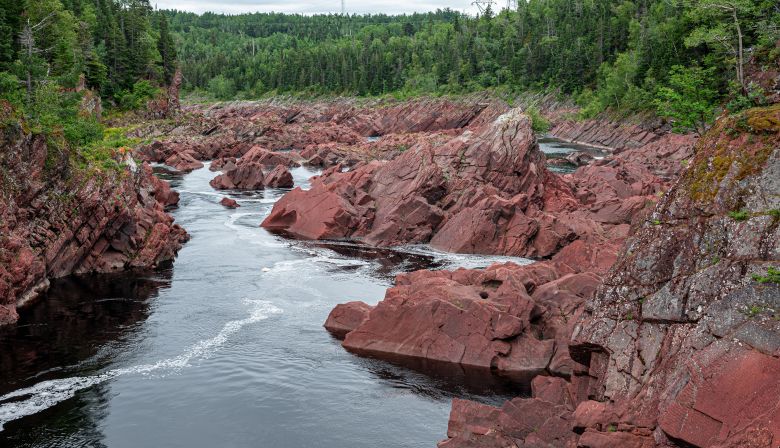
Whispers about the remarkable salmon returns of the Exploits River (Link to counts here) had rippled through my network, stirring my interest. The intrigue grew until I found myself heading towards this river, and more specifically, to the Environment Resources Management Association (ERMA) and its acclaimed Salmonid Interpretation Center.
As I steered into Grand Falls Windsor, it was Kim Thompson, ERMA’s Executive Director, who welcomed me. A small-town soul with a big vision, Kim encapsulates the spirit of being a ‘jack of all trades’ A leader in every right, she sees the forest for the trees. A two-decade stint with Parks Canada honed her adaptability and appetite for challenges before she took the reins of ERMA in 2019.
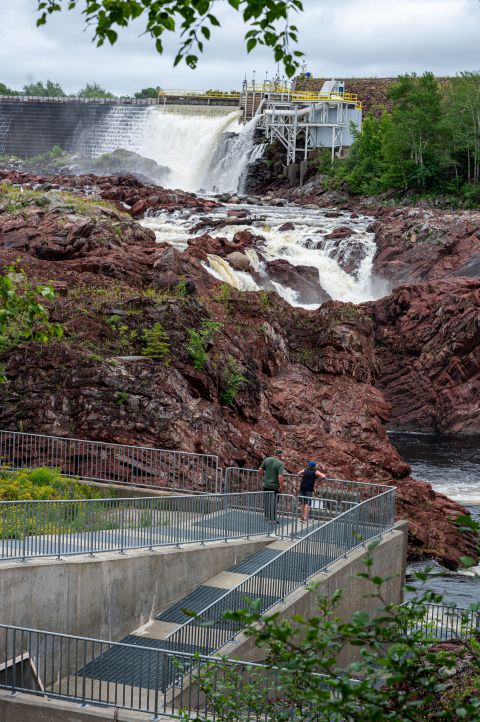
Kim had ushered me into this adventure weeks prior to my visit. She’d asked me to announce the launch of the MyCatch App to the Rivernotes community. The project to implement this advanced platform, supported by the Foundation for the Conservation of Atlantic Salmon (ASCF), is two-fold in its purpose: it assists ERMA in tracking the quantity of fish caught on the Exploits, while simultaneously offering anglers an informative experience on the appropriate methods of handling fish.
ERMA’s journey began in the mid-80s, conceived by a group of community members passionate about reviving the Exploits River. 40 years later, the endeavor’s success is evident in the annual return of over 20,000 salmon, achievements made without a continuous hatchery program.
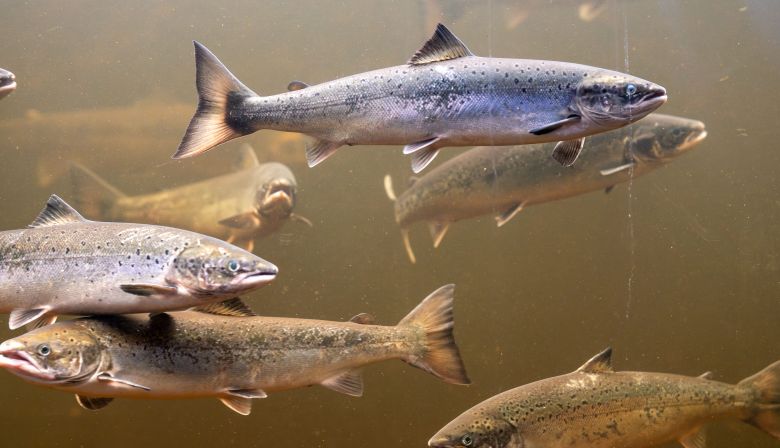
She walked me through the impressive facility at the Salmonid Interpretation Center, displaying the human-made channel leading up to the fish ladder, nestled beside the dam. This unique location provides a rare opportunity for people to appreciate the power and elegance of Atlantic salmon up close.
Our vision at ASF is Wild Salmon. Wild Rivers. Yet, in a world where humans and salmon must coexist, the Exploits River story offers a model of compromise. Kim’s collaboration with the dam operators, ensuring optimal conditions for the salmon, testifies to this reality. Her story about the dam operator who called her daily for a month, following an unannounced change in the flow, is heartwarming. This tale of cooperation emphasizes her optimistic outlook—a ‘glass half full’ approach, focused on building bridges and seeking opportunities.
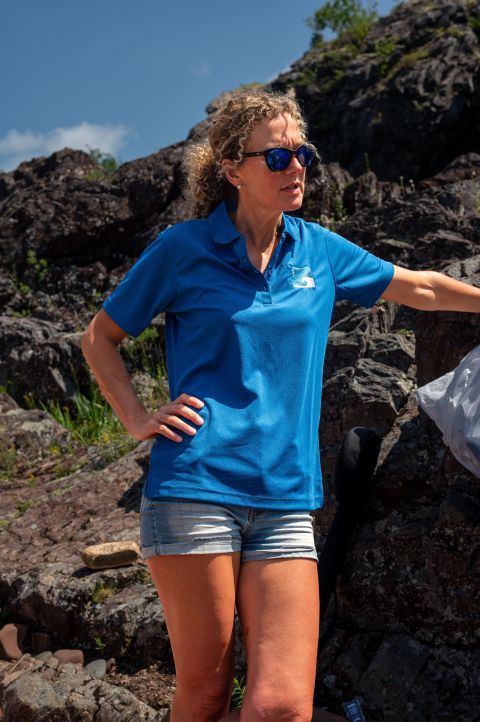
It’s clear that Kim’s focus is always on finding opportunities, on building bridges, partnerships, and on fostering collaboration. She believes there’s is a common desire among the salmon community to work together and she seeks to leverage this shared passion to tackle the challenges of the future.
The unknown—forest fires, heatwaves, and other whims of nature—is perhaps the biggest challenge of all. But Kim’s approach is rooted in resilience and adaptability. She recognizes that not everyone has all the resources, skills, or finances. That’s why she insists, “information is power.” The more engaged the stakeholders are, the stronger the community becomes.
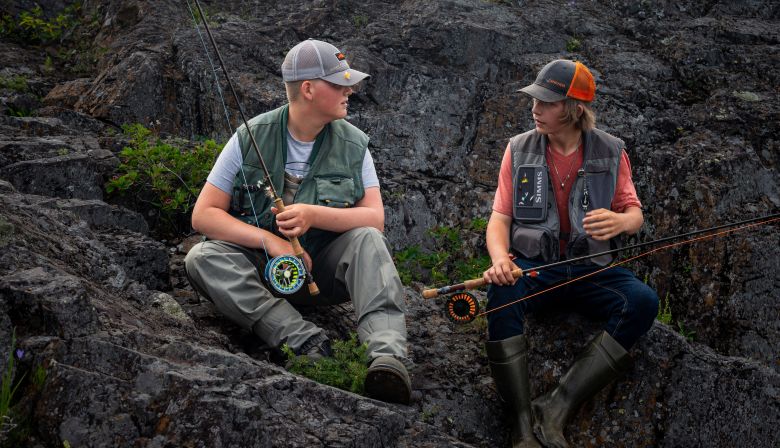
Through her involvement with regular meetings co-chaired by representatives from DFO and non-governmental environmental organizations, Kim ensures a close relationship between various stakeholders, encouraging information sharing and capacity building. Kim carries the torch, keeping up with the constant change of managing a wild Atlantic salmon population.
The next day, Kim graciously coordinated with a group of young fishing enthusiasts and another example of a healthy, thriving and youthful future for the Atlantic salmon community. She arranged for us to spend a day at the Exploits’ renowned ‘honey hole.’ This enthusiastic group, comprising Cash Canning, Charles Day, Coleton Cole, and Carter Conway, brought a refreshing passion for fishing that was a pleasure to witness.

Most of these boys are fresh to fishing, their interest sparked only recently after an introduction to the art of fly tying by their teacher, Paul White. He’s a dedicated salmon fisher, whom I look forward to meeting at Portland creek in the coming weeks.
Cash in particular has taken a shine to fly tying, describing it as not just an exciting activity leading to a thrilling catch, but also as a medium for creative expression. He explained, “When you create a fly, you might also make some money. But there’s nothing better than hooking a fish with a fly you’ve made yourself.”
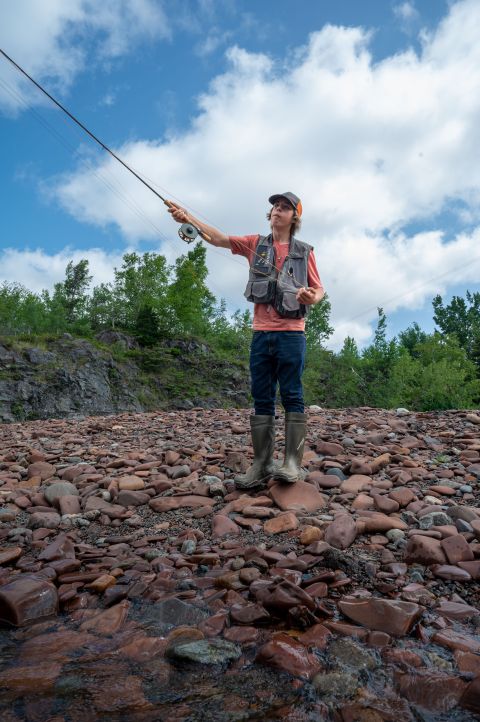
Eager to experiment, Cash had grown fond of tying his fly to his leader with a riffle hitch. He believes in its unique ability to lure fish. “It pisses the fish off and shows ‘em all the color,” he remarked, providing me with the best justification for this technique thus far.
For these boys, fishing is not merely a way to pass time, but a lifestyle choice. After landing his first fish this season, young Carter already envisions a lifetime of fishing on the Exploits. “The thrill of the river, beats out video games any day” he says, favoring the actual experience of fishing over hunting in video games like Call of the Wild.
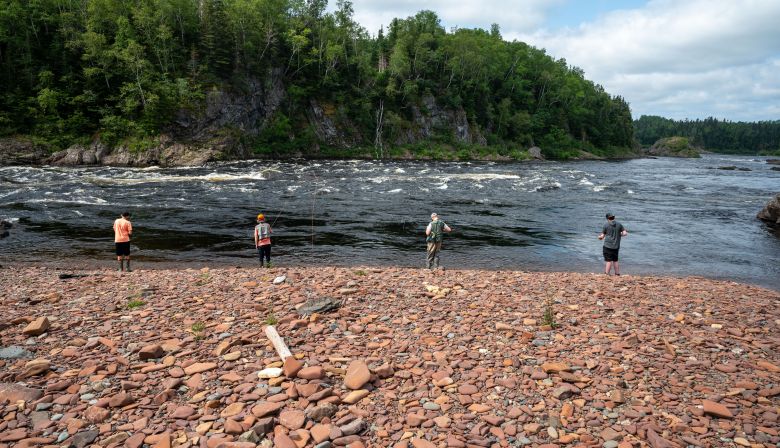
Their respect for the river and the life it supports is commendable. When asked about their stance on catch and release, they expounded on the necessity of treating fish with care, endorsing the use of barbless hooks and minimizing the fish’s time out of water.
Coleton’s story is particularly heartwarming. His fishing passion was a legacy from his grandfather who, upon being unable to continue due to weakening hands, entrusted Coleton with all his gear and knowledge. “He even drew me an entire map for fishing Bishop Falls,” Coleton recalled with affection. “He even stands with me and tells me how to fish it!”
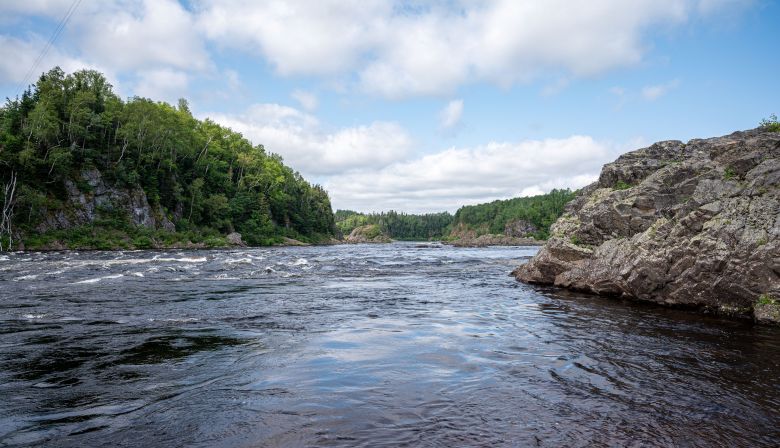
Charles relishes the serenity of the river, finding the rhythmic lull of the water a calming antidote to life’s stressors. “If I’m not on the river, I’m at my bench, tying flies,” he shares. His choice of flies usually vacillates between the Dirty Bomber and Green Machine. His proudest moment was landing a 13-pound salmon at the Grand Falls hole on his second cast using a Dirty Bomber, an experience that left him ecstatic.
Despite their youth, the boys fully comprehend and support conservation initiatives like the MyCatch App. They laugh good-naturedly at older anglers’ struggles with the app but are staunch advocates of its mission to promote catch and release practices.
These young anglers embody a lasting passion for fishing. “If I ever stop salmon fishing,” Cash jokes, eyes twinkling, “I’ll be six feet under – still gripping my fly rod in my casket.” Their joy, generosity, and unswerving love for fishing serve as a reminder of why the river continues to captivate us, time and again.

As I ventured into the next chapter of my journey, I spent a few days trailing Kastine Coleman, exploring some of her cherished locations. Most notable was the Humber River, where she and her partner, Terry, operate a guide service and media company, Tight Loops Tight Lines. Recognizing that to truly understand the Humber’s richness and the challenges it faces, I would need their insights, I had reached out to Kastine early on.
In addition to her business, Kastine serves on the board of the Salmon Preservation Association for the Waters of Newfoundland and Labrador (SPAWN). They take their motto, “don’t be mean, keep it clean,” to heart, executing remarkable work in the Corner Brook area and beyond.
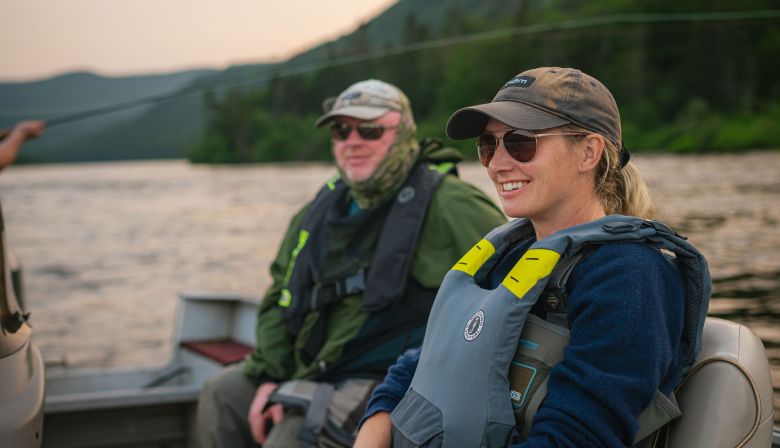
Kastine introduced me to a fish ladder they funded and developed on Corner Brook Stream, a place once void of salmon. Today, thanks to their efforts, about 100 fish return each summer. They’ve secured resources to employ students annually to maintain this ladder and another on Harry’s River, a collaboration with DFO.
Currently, Kastine’s primary focus is a conflict not with industry, but with other recreational users: the clash between anglers and sea-doo riders. This summer, amidst a heatwave, the Humber had to be closed under warm water protocol, though as she and I spoke there were people on jet skis zipping over locations where salmon were holding.
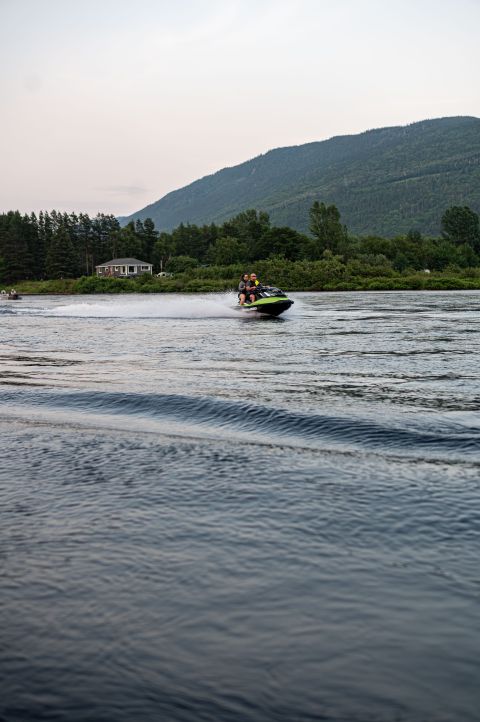
The issue is clear cut: the fast-paced sea-doos unsettle the fish and often displace them from where they’ll later dig their spawning beds. Given that much of the lower Humber River is only 4 feet deep, this disruption forces the fish to expend unnecessary energy, adding stress.
However, the solution is far from simple. There’s no association of sea-doo owners’ to negotiate with, only individuals exercising their river rights.
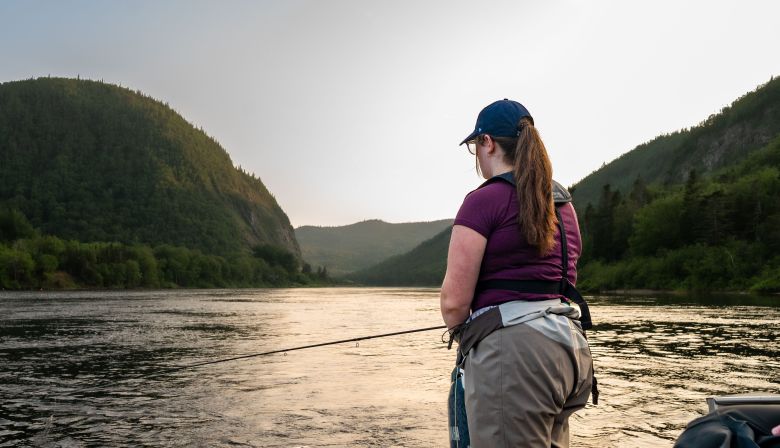
Kastine remains hopeful for a compromise. “I think a meaningful compromise would involve establishing no-wake zones and speed limits in known salmon spawning areas. Outside of these areas, sea-doo riders can travel and recreate as they wish.” She collaborates with SPAWN and local NGOs to try to negotiate these compromises, but without a specific group with which to negotiate, achieving this goal remains uncertain.
Thank you for being part of the Rivernotes community and tuning in each week as I navigate the stunning, rugged landscapes of salmon country. As always, share the Rivernotes blog with friends who might appreciate these stories. Each share and gift given becomes a ripple that could spark a wave of change.
Please consider contributing to ASF, HERE.
Also, I love hearing from you all, especially those of you who challenge me to do a better job! Please, always feel encouraged to reach out directly to Rivernotes@asf.ca or Pdore@asf.ca with comments, questions or concerns!
Until next week, stay sharp, and tight lines!
Peter
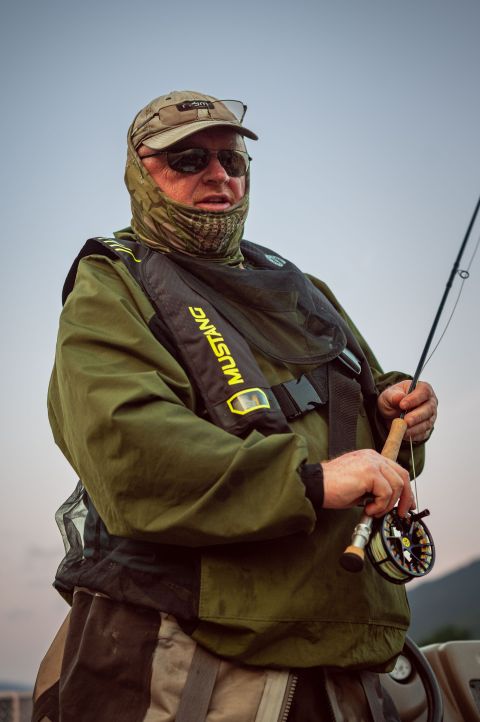
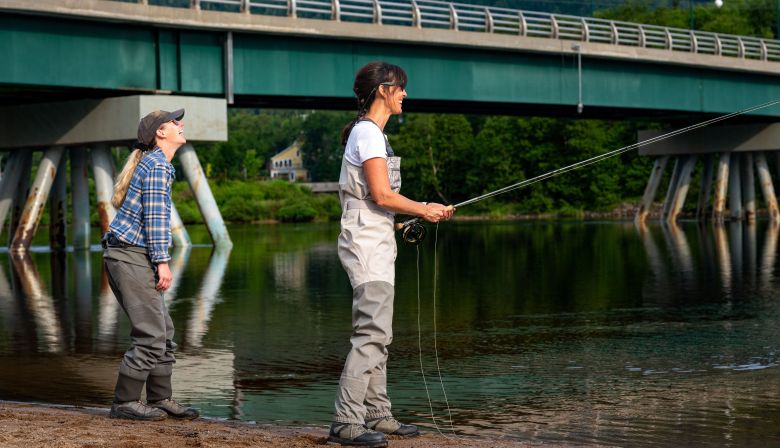
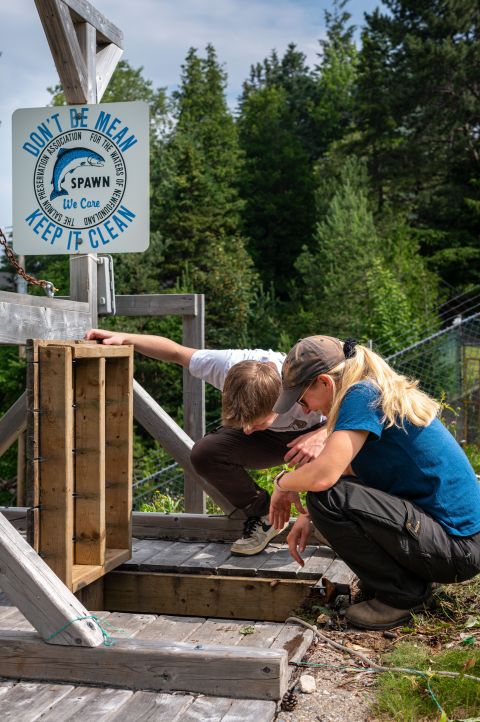
Serge Collin, New Brunswick Program Director, Reports:
Eager to acquaint myself with my new role at ASF, reconnect with old colleagues, and introduce myself to new ones, I’ve been traversing the province. I wanted to explore and, ideally, dip my boots into the Miramichi, Restigouche, and Nepisiguit watersheds to gain a first-hand perspective of the summer season.
It’s fair to say the first half of the summer season has been characterized by contrasts: from rain and high water to blistering heat and warm water, often in sudden spikes and drops.
From the season’s outset, there was optimism fueled by good water levels, anticipated to facilitate early salmon runs. Indeed, the salmon arrived but, much to some anglers’ disappointment, they didn’t linger. Capitalizing on the robust flow, they swiftly moved on. Anglers who found themselves at the right place at the right time enjoyed success.
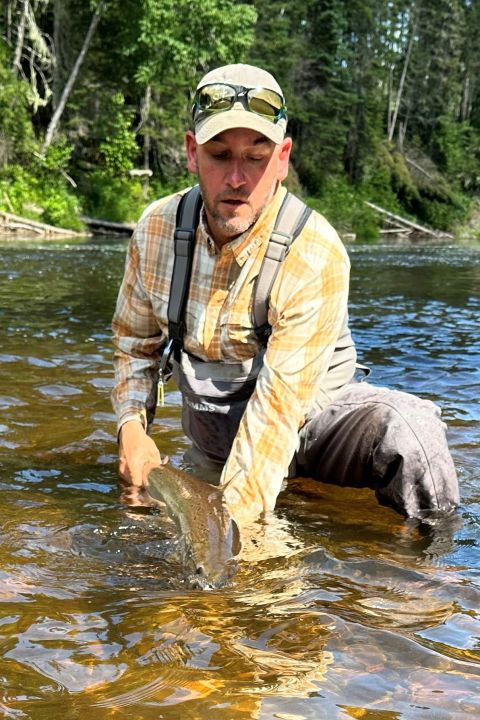
On the eve of the first warm water protocol coming into effect on the Miramichi, I had the pleasure of casting a few flies on the Cains River. It was my first Miramichi visit this season, and during an unusually high-water season it was no surprise to see evidence of salmon navigating these parts of the river. How often have we recently seen salmon dwelling at Black Brook or Brophy’s Pools, waiting for rainfall to facilitate their journey to higher sections of the Cains?
As we venture into the second half of the summer, I received a notification from DFO of a warm water protocol coming into effect, leading to the closure of cold water pools on the Miramichi watershed: Fisheries and Oceans Canada | Gulf Region (dfo-mpo.gc.ca).
Thus, from July 24th, both the Nepisiguit and the Miramichi rivers are under angling restrictions due to warm water conditions. The Restigouche faced a brief period of restrictions, and notably, the Nepisiguit has been limited to morning fishing since June 30th.
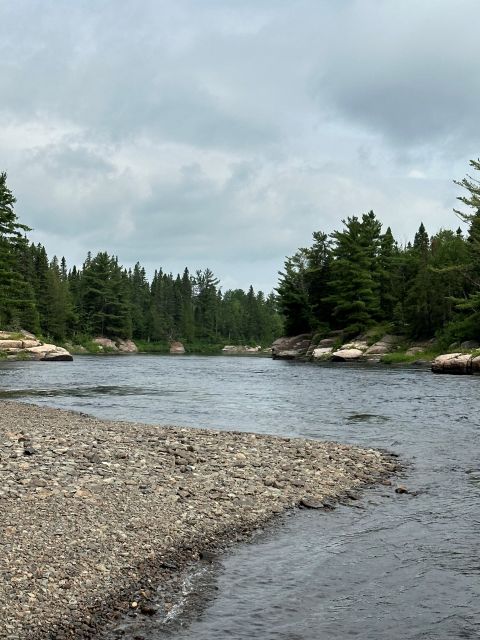
ASF, in partnership with all affiliates, stakeholders, and Indigenous communities involved in salmon conservation, are closely monitoring these situations. We maintain consistent communication to address reported concerns and to find effective short- and long-term solutions.
It’s worth mentioning that while high water conditions have delayed or disrupted some scheduled projects, such as cold water restoration, watershed affiliates have adapted their schedules, keeping operations moving as summer progresses.
A testament to this adaptability is the Friends of the Kouchibouguacis staff receiving their electrofishing certification from Carole-Anne Gillis and the Canadian River Institute. This activity plays a crucial role in their program to monitor fish populations, especially juvenile Atlantic salmon numbers.
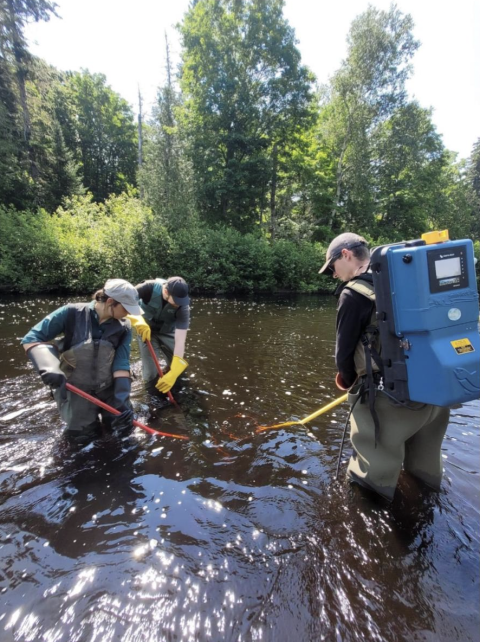
Overnight on the Upsalquich
Last weekend, my wife Chantal and I had access to Crown Reserve waters on the Upsalquich, from Saturday 2pm to Monday 2pm.
The Upsalquitch is a gem of a river that I have learned to appreciate in the last couple of years. A tributary of the Restigouche, it has clear Appalachian fed waters—the likes of the legendary Restigouche, but in a more intimate setting. Chantal and I try to get to the Upsalquitch a few times a year if we can, for some wilderness camping, canoeing, and to fish a few Crown Reserve stretches. It never ceases to amaze us on how magnificent this part of New Brunswick truly is, and how nature can inspire such a wonderful sense of place and sense of self.

The St. Croix River, an international boundary river that was once abundant with herring, shad, eel, and salmon, has begun a new chapter in its history. NB Power has initiated the decommissioning and removal of the Milltown dam, a barrier that has disrupted natural water flows and fish migrations for over a century. This move marks a major milestone in the river’s recovery efforts.
The St. Croix River has experienced significant challenges due to pollution and blockages that prevented fish migration. During the 1980s, the river saw the return of more than 2.5 million alewife annually. However, fish migration was obstructed in 1995 at the Grand Falls Dam at the request of smallmouth bass outfitters in the watershed. This had a catastrophic effect on fish populations, with only 900 alewife returning to the river by 2002.
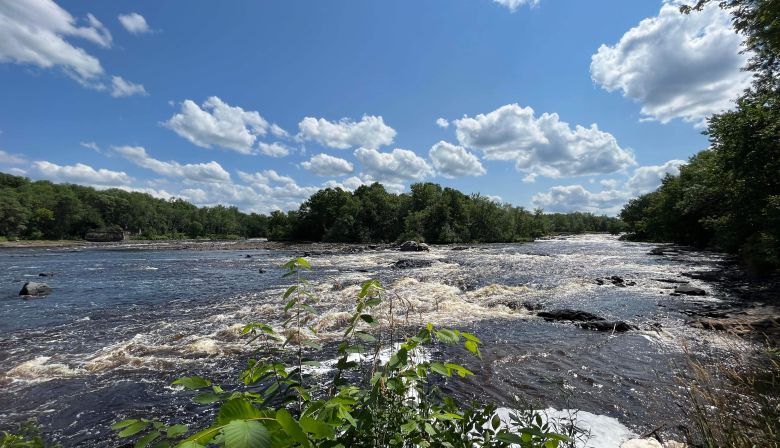
Through the dedicated efforts of local non-profit groups and the Peskotomuhkati First Nation, the blockade at the Grand Falls Dam was finally removed in 2013. This led to a steady rebound in sea-run fish populations, evidenced by the 836,755 alewife that returned to the river this year.
The removal of the Milltown dam, the first significant barrier that sea-run fish encounter on their migration, is a critical part of the river’s restoration plans. This dam operates as a run-of-the-river facility, meaning it doesn’t have a large head pond. Water levels have been lowered to what will now be the area’s normal levels. With the lowering of the water levels, Salmon Falls, the original falls and rapids not seen since the dam’s construction in 1881, have reemerged.
Restoration work began in July and is expected to fully restore access to 16 km of habitat by 2024. During this time, the Peskotomuhkati First Nation is conducting research to track the effects of the dam removal and is working with operators of the upstream Woodland dam to improve fish passage further.
To see the report from the Dungarvon fish barrier, click here!
To see the report from the Northwest Miramichi fish barrier, click here!

Charles Cusson, Quebec Program Director, Reports:
See full report here – Pour voir le rapport complet, cliquez ici.
Dame nature a récemment béni certaines rivières tels la Matane, Matapédia, Cascapédia et Sainte-Anne avec une infusion d’eau qui devrait avoir l’effet d’améliorer les conditions de pêche. Cependant, une tendance se développe de plus en plus avec des précipitations qui nous arrivent de façon très intense, mais pendant une courte période.
Les représentants du MELCCFP (ministère de l’Environnement, de la Lutte contre les changements climatiques, de la Faune et des Parcs) entretiendront des discussions avec les gestionnaires de rivière d’ici le 31 juillet à savoir s’il y a une abondance suffisante de la ressource qui permettrait une récolte de grands saumons.
Nature has recently graced certain rivers such as the Matane, Matapédia, Cascapédia and Sainte-Anne with much needed precipitation, which should improve angling conditions. However, a trend is developing: when the rain does materialize, it’s very intense, over a short period of time.
Representatives of the MELCCFP (Ministry of the Environment, the Fight against Climate Change, Wildlife and Parks) will hold discussions with river managers by July 31 to find out if there is sufficient abundance of the resource to allow a harvest of large salmon.
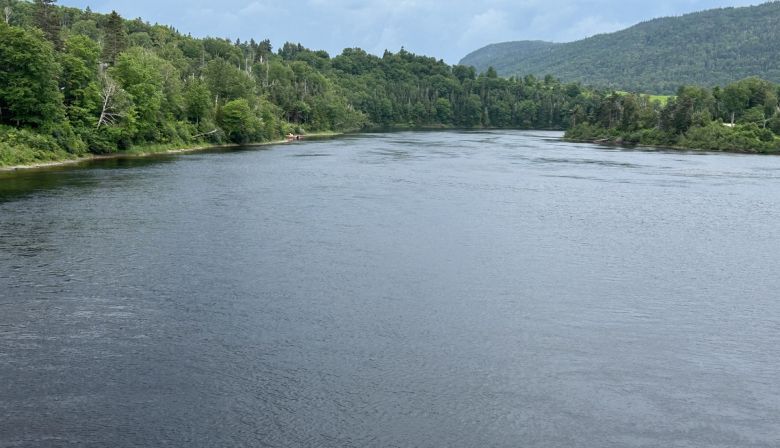
Don Ivany, Newfoundland and Labrador Program Director, Reports:
Heat waves persisting for the past three weeks across much of Newfoundland and Labrador have led to the Department of Fisheries and Oceans (DFO) imposing angling restrictions on several salmon rivers. Due to the continued high temperatures, it was just a matter of time before DFO implemented their Environmental (warm water) protocols. The protocols, restricting angling to early morning hours, were enstated a few days ago across the Island and Labrador, following the discovery of nine large salmon dead from heat stress on the Southeast River near Placentia Bay.
The early morning fishing only restrictions dictate that fishing on affected rivers can only occur between one hour before sunrise and 10am, when water temperatures are typically at their lowest. These restrictions will persist until environmental conditions improve, at which point DFO will announce the reopening. Further information can be found in the Anglers Guide Booklet for NL – 2023-2024 seasons (Annex 3) or online at https://www.nfl.dfo-mpo.gc.ca/en/NL/AG/anglersguide. Current in-season closures and openings can be checked at https://www.nfl.dfo-mpo.gc.ca/nfl-tnl/en/isrs or by calling 709-772-2045.
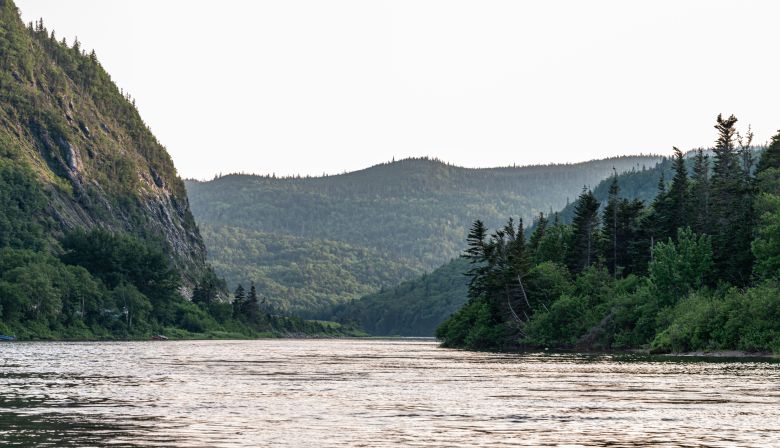
Given the numerous rivers currently under early morning fishing restrictions, we encourage anglers to check DFO’s in-season-status report for updates. In the meantime, we can only hope for cooler temperatures and more rain.
Interestingly, despite warm temperatures and low water levels on most provincial rivers, some Island rivers have high water levels due to sporadic rainstorms, especially those on the Southwest coast. Despite this, the fishing has been reported as quite poor due to the prevailing high temperatures and low water levels. However, anglers report sightings of large salmon numbers at the mouths of some rivers, potentially waiting for cooler river temperatures and higher water levels to enter.
According to angler reports, the only rivers with a good fish run this year are in central Newfoundland, such as the Exploits River, Gander River, Terra Nova River, and Ragged Harbour River. These observations seem to align with DFO’s fishway counts. The fishway report ending on July 16, 2023, can be found at https://www.nfl.dfo-mpo.gc.ca/en/atlantic-salmon-fishway-counts. However, these rivers have also experienced slow fishing due to high water temperatures and low levels in the past week.
In Labrador, the Sandhill River and English River are doing well, but returns on other rivers have been below average this year. We eagerly await cooler air temperatures and improved water levels to see if more runs will enter our rivers in the coming weeks.

Damon Conrad, Sackville River Coordinator, Reports:
Our local and regional environments are becoming increasingly unpredictable and severe, a trend evidenced by recent events along the Sackville River. In May, we confronted an unparalleled crisis of wildfires coupled with drastically low river flows. Merely two months later, we were dealing with the most devastating flooding in over half a century, leading to the highest river flow ever recorded by the Sackville River Association. This juxtaposition of two extreme natural disasters within such a short period should serve as an undeniable wake-up call that we can no longer afford to ignore.
